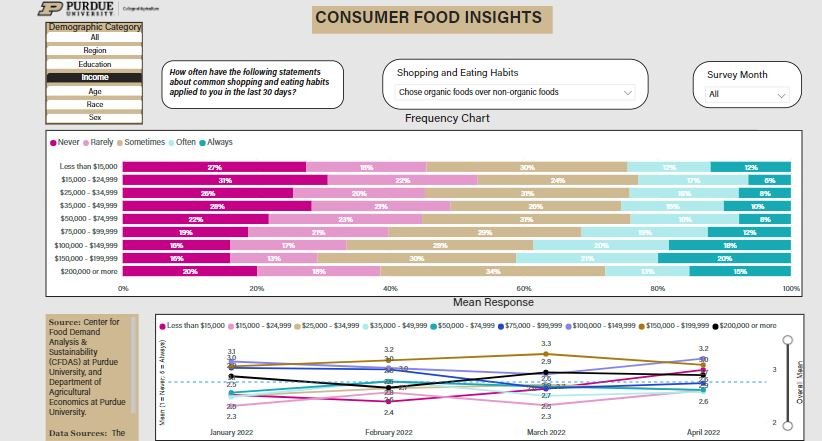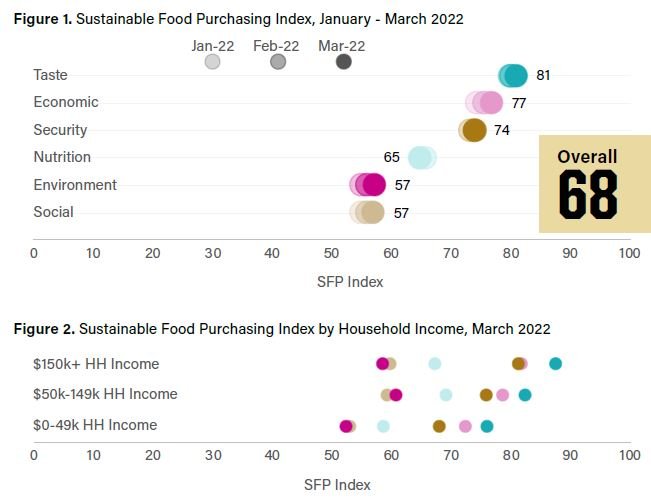I’ve been fortunate to have several papers accepted for publication in the past few days - one on meat demand, another on plant-based meat alternatives, and two papers on consumer research methods. Below is a summary of each, starting first with the research methods papers.
1) A Basket-Based Choice Experiment with Vincenzina Caputo in Food Policy. Here’s the abstract:
“Although economic research on food consumer demand has exploded in recent years, most survey demand elicitation approaches have substantial limitations for food policy evaluations as they involve consumers choosing only one item out of a bundle. There is a need to design a more flexible approach capturing more realistic consumption patterns. This study introduces such an approach – a basket-based choice experiment – where consumers select their preferred food item or combination thereof. Our basket-based choice experiment includes 21 food items that can be freely combined to construct over 2 million possible baskets. Our results show that when given the opportunity, consumers select multiple items for their basket, most commonly three or four items. A composite conditional likelihood function approach is used to reduce the computational burden associated with modeling the choice of over 2 million possible baskets, and estimates are utilized in a multivariate logit model to calculate the probability of bundle selection and individual food price elasticities. Unlike typical choice experiments utilizing multinomial logit model variants, which forces products to be demand substitutes, our basket-based approach is able to capture a rich set of substitution and complementary patterns, and we find that most of the 21 food items studied are demand complements. The BBCE is used to explore policy questions related to the impacts of changing prices on the healthfulness of consumer dietary choices and the welfare effects of product bans, such as Meatless Monday.”
2) A Calibrated Choice Experiment Method with Lauren Chenarides, Carola Grebitus, and Iryna Printezis in the European Review of Agricultural Economics. Here’s the abstract:
“Although choice experiments have emerged as the most popular stated preference method in applied economics, the method is not free from biases related to order and presentation effects. This paper introduces a new preference elicitation method referred to as a calibrated choice experiment, and we explore the ability of the new method to alleviate starting point bias. The new approach utilizes the distribution of preferences from a prior choice experiment to provide real-time feedback to respondents about our best guess of their willingness-to-pay for food attributes, and allows respondents to adjust and calibrate their values. The analysis utilizes data collected in 2017 in two U.S. cities, Phoenix and Detroit, on consumer preferences for local and organic tomatoes sold through supermarkets, urban farms, and farmers markets to establish a prior preference distribution. We re-conduct the survey in May 2020 and implement the calibrated choice experiment. Conventional analysis of the 2020 choice experiment data shows willingness-to-pay is strongly influenced by a starting point: the higher the initial price a respondent encountered, the higher the absolute value of their willingness-to-pay. Despite this bias, we show that when respondents have the opportunity to update their willingness-to-pay when presented with the best-guess, the resulting calibrated willingness-to-pay is much less influenced by the random starting point. ”
3) Benchmarking US Consumption and Perceptions of Beef and Plant-Based Proteins with Hannah Taylor, Glynn Tonsor, and Ted Schroeder in Applied Economic Perspectives and Policy. Here’s the abstract:
“This article uses two complementary analyses to document consumption of beef and plant-based proteins along with perceptions held by US consumers. Beef is chosen three times more often than plant-based proteins and consumers hold a positive image of beef overall. Key differences are outlined between regular meat consumers and those declaring alternative diets. Combined these findings extend understanding in the dynamic situation presented by plant-based proteins in the US market.”
4) U.S. perspective: Meat Demand Outdoes Meat Avoidance with Glynn Tonsor in Meat Science. Here’s the abstract:
“Despite ample discussion of health, environment, and animal welfare effects of meat production and consumption, this article documents past, current, and projected consumption patterns reflecting robust meat demand in the United States. There is some evidence of meat avoidance behavior among a segment of the population, including younger, higher educated, higher income consumers in the Western United States. At the same time, the majority of U.S. residents self-declare as regularly consuming products from animals, and there is evidence of strong demand growth for meat products in recent years. Key factors influencing protein purchasing decisions are presented revealing critical roles of taste, freshness, and safety. Combined this article summarizes both the aggregate and more refined, household-level situation underlying robust meat demand in the U.S.”








